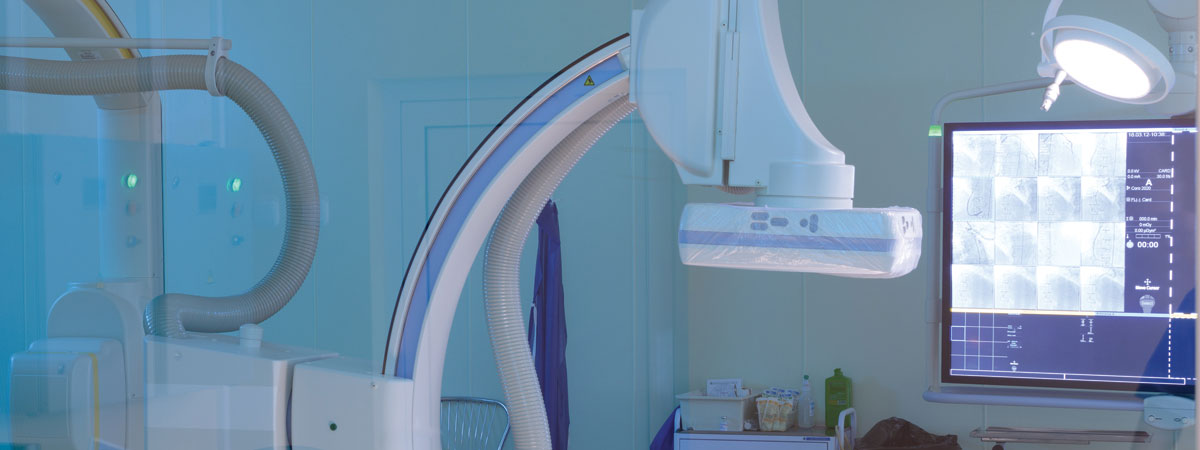Neurovascular interventions
Diagnostic angiography
Angiography can be used to diagnose abnormalities within the blood vessels of the brain. Abnormalities include atherosclerosis (narrowing of the arteries), aneurysm (a bulge that develops in an artery), a brain tumor, a blood clot and more. It can also be used to evaluate arteries in the head and neck to prepare for surgery or other procedure.
Diagnostic angiography (also known as cerebral angiography) is performed by a specially trained interventional radiologist who uses a catheter, x-ray imaging guidance and the injection of a contrast material to examine blood vessels in the brain. By using a catheter, it is possible to combine diagnosis with treatment in a single procedure.
Because diagnostic angiography results in a very detailed and accurate view of the blood vessels in the brain, it may reduce or even eliminate the need for surgery. The results are more precise than other non-invasive tests, and the risks of the procedure are very low.
Epistaxis (nosebleed)
Epistaxis is a common and benign disorder that results in a higher than normal amount of nosebleeds. It can also be the result of another disease. Most people with epistaxis do not require medical care, however it can become a major issue for some patients, causing severe anemia or cardiac dysfunction.
In catastrophic cases, trauma surgery may be required. However, for many cases of uncontrollable epistaxis, and for which compression, cauterization and other conservative measures have not worked, arterial embolization is a treatment of choice.
During the embolization procedure, an interventional radiologist uses imaging to guide a catheter into the maxillary and facial arteries supplying blood to the nasal region. Microspheres are then injected into the artery where they lodge in the smaller vessels, effectively stopping the flow of blood.
Tumor embolization
Tumor embolization is performed on a tumor within the brain or spine, usually prior to surgery to remove the tumor. By blocking the flow of blood to a brain tumor, less blood loss will occur during the surgery and make it easier to remove the tumor.
Tumors of the spine, head and neck are have relatively large vessels supplying them with blood. When a tumor has a prominent blood supply, it will need to be embolized before surgery. Prior to the embolization procedure, a cerebral or spinal angiogram will be performed to map the vessels within the brain and identify the blood supply to the tumor.
Next, a catheter is inserted into the body and guided with imaging to the site of the artery feeding the tumor. A blocking agent is then injected into the vessel which effectively cuts off or significantly reduces the blood supply to the tumor.

